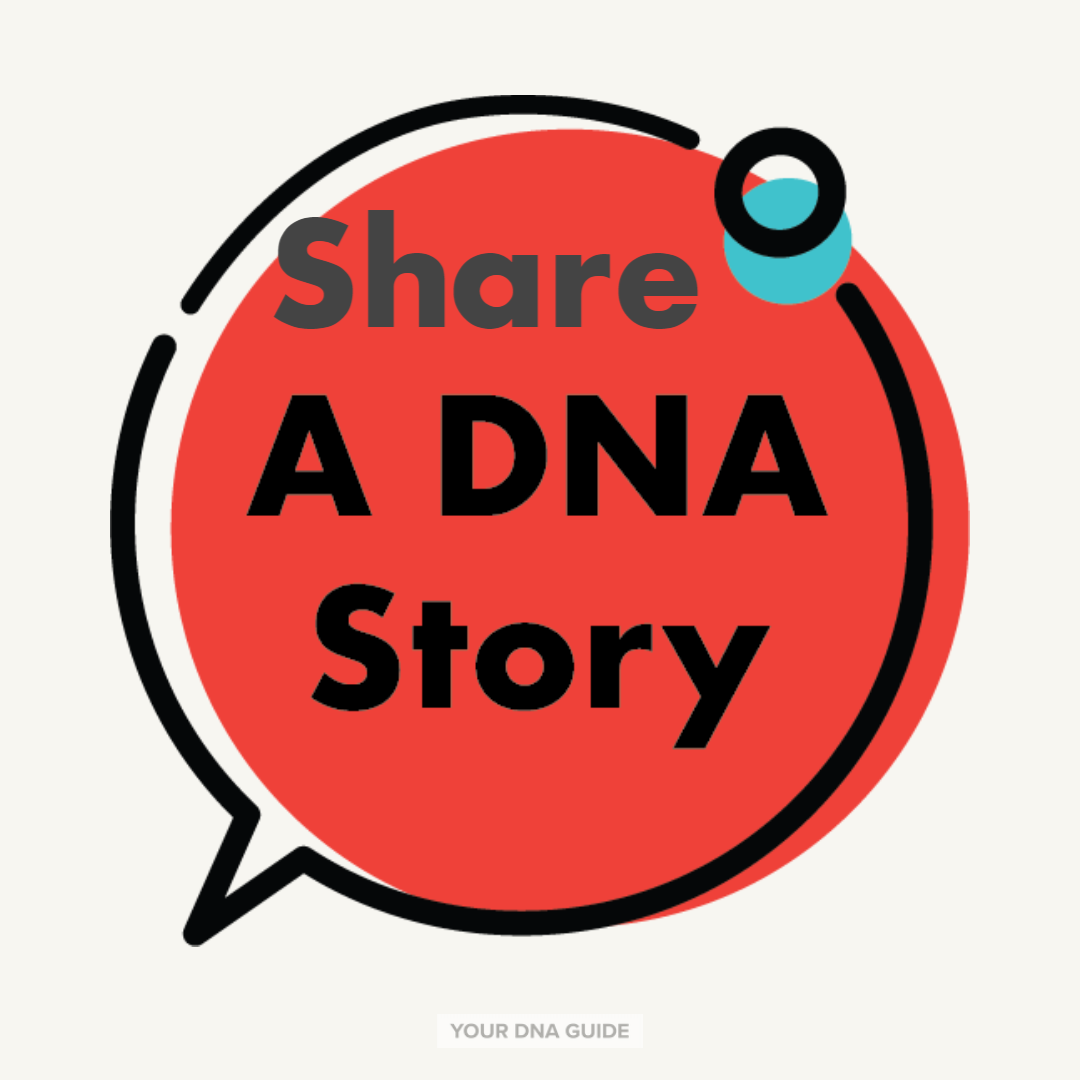Sharing DNA stories can be rewarding for you AND your listeners–if you know how to tell a compelling tale. Boost your storytelling chops for DNA and family history discoveries with these essential elements of a good story.
Whenever someone finds out what I do for a living, they almost always want to hear DNA stories. People are fascinated by the novelty and possibilities of DNA. Some are intrigued by the science or ethical and legal implications.
Mostly though, people want to hear about discoveries others have made—and what happened next. (My hairdresser loves these stories so much that I save them up to tell her.)
You may already have powerful DNA stories: family mysteries solved, connections made with living relatives, mystery ancestors identified. Some of your experiences may not be ready for telling. Others, you may be bursting to share! Perhaps you’ve started telling them already.
With a story as important as a DNA discovery, I want to tell it right. Storytelling is an art form all its own. “A well-told story is a gift to the listener—” and that’s exactly what you want your stories to be.
There are many secrets to storytelling success. And if you’re going to formally document your genetic genealogy journey, you’ll need to think about things like source citations. But you can get started with these essential elements of any good story.
How to tell a good DNA story
Every story, long or short, has a plot: a beginning, a middle and an end. These thread together into an overall narrative or story arc.
This sounds so basic. But it can be challenging to decide where a DNA (or any family history) story starts and ends. Do you begin with your decision to take a DNA test, or with the moment you learned about a mystery in your family? What if you don’t have a clear-cut answer or resolution to your story yet? Consider these thoughts:
Finding the beginning of a story
Look for the best entry point into your story by drafting a few different beginnings. See which gets you to the action most succinctly and powerfully. (If you really hate writing, find a willing friend and do this verbally.)
You don’t usually need to spend much time “setting the stage” or providing backstory. The beginning just needs to introduce you (if your audience needs this) and the problem or challenge that drives the “action” of the story. If it’s taking too long to get to the action, look ahead in your story. Where does it really get interesting? Start there instead.
Filling up the middle of a story
Now it’s time to keep answering the question, “And then what happened?” Narrate the twists and turns and dead ends in your DNA discovery adventure. Share essential details that are ingrained in your memory, or that contribute to the pathos, humor, or drama. Those memorable little snippets will help your listeners feel the story.
You may hit up against ethical and privacy considerations. Think these through before telling your story. For example, whose story are you telling—is it yours to tell? When telling stories, be respectful and withhold judgment.
You may not have a full storyline, and that’s ok. If there’s a gap or uncertainty, simply say so and move on with what you DO know. Similarly, try not to get distracted by things that aren’t relevant. If your ethnicity results aren’t part of your discovery, for example, don’t mention them. If your listeners want to know more, they can ask follow-up questions, and you can answer with gusto. (Just don’t make them sorry they asked.)
And though you’re understandably proud of your DNA sleuthing skills, my advice is not to include too much of the technical stuff. Instead of explaining the What Are the Odds? tool on DNA Painter, you might simply say, “An online tool helped me figure out how we mostly likely all fit on our family tree.” Again, let your listener’s follow-up questions drive any deeper details.
Finding the end of a story
Some DNA stories have “endings.” Others are still unfolding. Some may never have an identifiable conclusion. Again, just say so:
“The paper trail and the Y DNA test results point toward one of two brothers as the father, but I still don’t know which one it is. What I DO know is that….”
Remember, a good story is driven by a problem that causes change or growth in the main character (which is often YOU). As you conclude your story, be sure it’s clear what change occurred or why this story matters. Maybe you’ve rewritten your family history as a result, or your sense of identity has changed. This is the human interest piece that makes DNA stories so compelling, so don’t skimp on this part.
Tell us your DNA story! We love to hear them—and sometimes share them on this blog.
Remember: You can “do the DNA”—and we’re here to help when you need us. Speaking of help, go check out our free guide on next steps for your DNA test! It will walk you through the ins and outs of what to do once you get those DNA results back!


